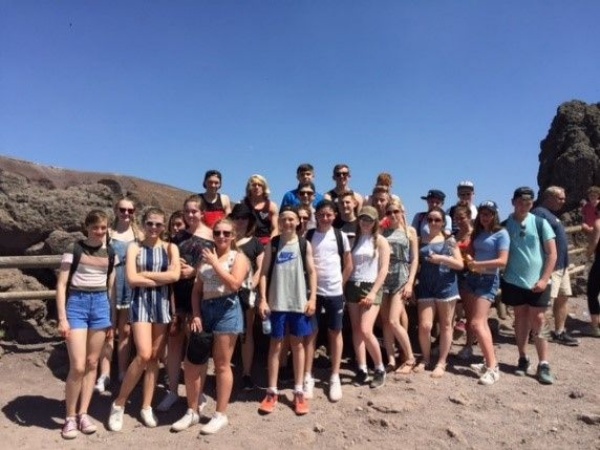Italy Trip Report

Please enter an introduction for your news story here.
On Monday 11th July a group of thirty Year 10 pupils and six Year 12 pupils travelled to Italy. The group stayed in a hotel which had panoramic views of the Bay of Sorrento. This was our base for five days where they were going to embark on a geographical adventure.
The first day consisted of a historical tour of Pompeii where life in this rich and prosperous city was dramatically interrupted in 79 A.D when Vesuvius erupted. It is one of the most famous archaeological sites in Italy where we had the opportunity to observe the asphyxiated remains. The excavations in Pompeii are visited by millions of tourists every year and it provided a good insight into life here two thousand years ago.
After Pompeii we travelled to Mt. Vesuvius which is 17,000 years old and one of the most famous active volcanoes in the world. In spite of its last eruption in 1944, killing 26 people, 700,000 people still live there. All the pupils did very well to hike to the top in the sweltering heat and were rewarded with the spectacular views.
The next day we travelled to the port to take a short boat trip to the island of Capri which lies within the Gulf of Naples and is famed for its lemon groves, natural beauty and expensive boutique shops. This offered pupils a great opportunity to observe the Geography of the Amalfi Coast from a different perspective. The highlight of this day included a cable car ride to the highest point on the island, and a visit to the Blue Grotto which is a sea cave on the coast of the island. Sunlight, passing through an underwater cavity and shining through the seawater, creates a blue reflection that illuminates the cavern and provides a beautiful environment.
We also had the opportunity to take a drive along the Amalfi coast. This is a 50-kilometer stretch of coastline along the southern edge of Italy. The coastal road winds past pastel-coloured fishing village, terraced vineyards and lemon groves. We stopped for lunch in the picturesque village of Ravello for some pizzas all round.
The final day consisted of one last geographical stop off at Solfatara, ‘the smoking crater’. This is a shallow volcanic crater which still emits jets of steam with sulphurous fumes.
The visit was an extremely memorable one which included history, geography, culture, Italian food and language. The pupils were absolutely fantastic and I was incredibly proud of the way in which they embraced the Italian way. They were a credit to themselves and our school. They were great company throughout the trip and I look forward to the next one.
